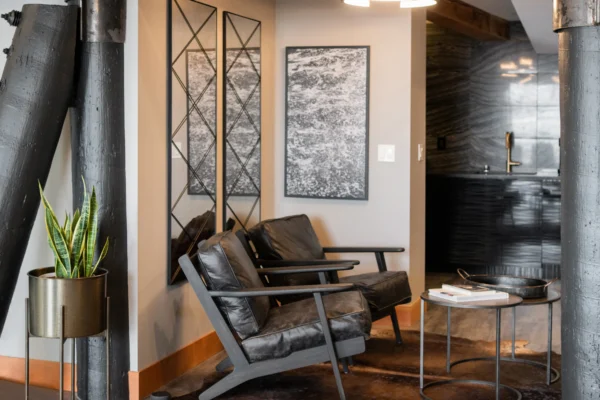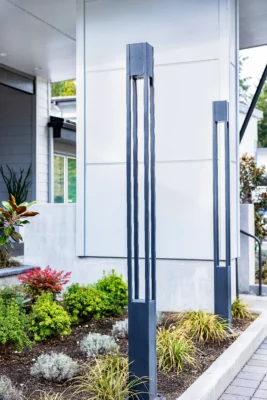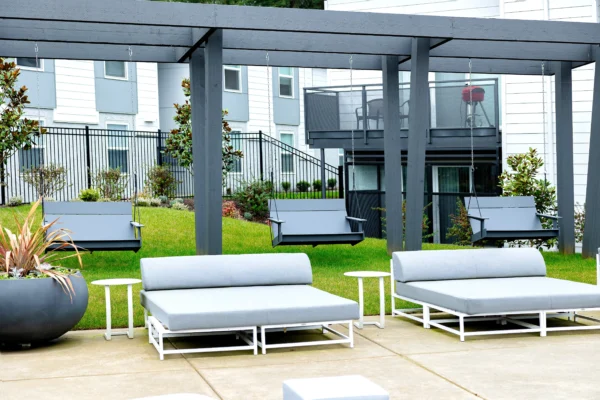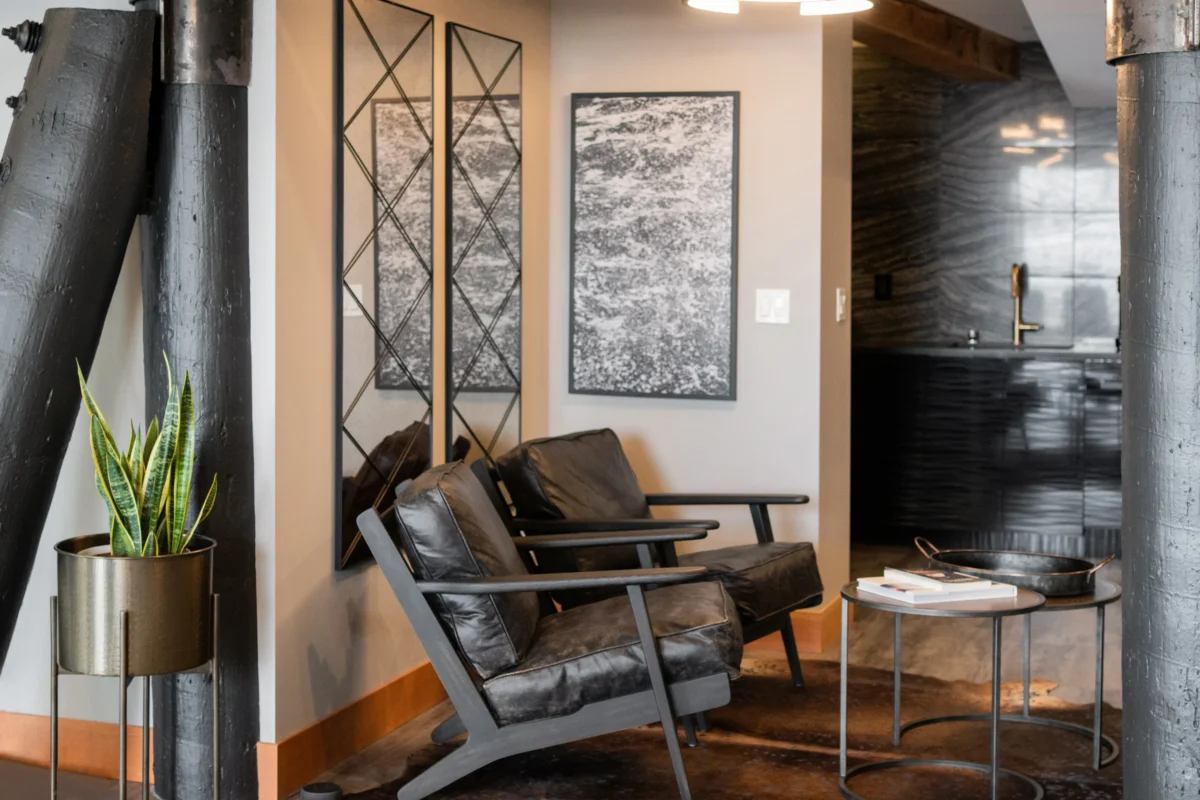Cutting-Edge Commercial Building Design
In the bustling realm of modern cities, commercial buildings aren’t just structures—they’re the lifeblood of urban landscapes. How we design these spaces profoundly impacts not only the aesthetic and functional aspects of our cities but also the well-being of their inhabitants. This post dives into the significance of innovative commercial building design, providing valuable insights for urban planners and real estate developers aiming to shape the future of urban environments.
Our Services
Bring your dream home to life—partner with Ariid Build and Remodeling for expert craftsmanship, seamless renovations, and custom solutions. Start your transformation today!
Get In Touch
Connect with Ariid Build and Remodel & Remodeling for expert advice on your design and construction journey. Whether you have questions or need guidance on your project, our team is ready to provide personalized service and support.
The Importance of Innovative Commercial Building Design

Commercial building design is more than creating visually appealing structures; it’s about integrating buildings seamlessly into the urban fabric. These designs must consider how they influence traffic flow, accessibility, and the everyday lives of city dwellers. A well-designed commercial building can foster economic growth, enhance community engagement, and promote environmental sustainability.
Designing with innovation in mind ensures that commercial buildings can adapt to the evolving needs of businesses and communities. Flexibility in design allows for spaces that can easily transform to meet different uses over time, making them more sustainable and economically viable in the long run. By focusing on innovative design, urban planners and developers can create buildings that stand the test of time both functionally and aesthetically.
The approach to commercial building design should be holistic, considering a building’s impact on its surroundings. Thoughtful design can mitigate the urban heat island effect, reduce energy consumption, and improve air quality, contributing to a healthier urban environment. This approach not only benefits the environment but also enhances the quality of life for those who live and work in these spaces.
Trends in Commercial Building Design

Sustainability
Sustainability is no longer a trend but a necessity in commercial building design. With increasing awareness of climate change and resource depletion, architects and developers are incorporating green building practices to minimize environmental impact. This includes using energy-efficient systems, sustainable materials, and renewable energy sources.
Green roofs and walls, for example, are becoming more popular as they provide insulation, reduce stormwater runoff, and improve air quality. Solar panels and wind turbines are also being integrated into building designs to harness renewable energy. By focusing on sustainability, developers can create buildings that are not only environmentally friendly but also cost-effective in the long term.
Water conservation is another crucial aspect of sustainable design. Implementing systems that recycle greywater for landscaping or using low-flow fixtures can significantly reduce a building’s water footprint. These practices are essential for creating resilient urban environments that can withstand the pressures of population growth and climate change.
Flexibility
Modern commercial buildings need to be adaptable to changing business needs. Flexible design allows spaces to be reconfigured easily, whether for expanding businesses, hosting events, or adjusting to new types of tenants. This adaptability ensures that buildings remain functional and relevant over time, maximizing their usability and longevity.
Open floor plans are a key feature of flexible design, allowing for easy reconfiguration of interior spaces. Movable walls and modular furniture can further enhance flexibility, enabling businesses to customize their spaces to suit their specific needs without major renovations. This adaptability is particularly important in urban areas where space is at a premium.
Technological integration is another aspect of flexible design. Smart building systems can be programmed and reprogrammed to accommodate different uses and preferences, making it easier to manage building operations and optimize energy use. These systems can also enhance occupant comfort and productivity, making commercial buildings more attractive to tenants.
Community Integration
Commercial buildings should enhance community engagement and connectivity. Designs that incorporate public spaces, such as plazas, parks, and pedestrian pathways, can encourage social interaction and create a sense of place. This integration fosters a vibrant urban environment where businesses thrive and communities feel connected.
Mixed-use developments are an excellent example of community integration in commercial building design. By combining residential, commercial, and recreational spaces, these developments create dynamic neighborhoods where people can live, work, and play. This approach reduces the need for commuting and promotes a more sustainable urban lifestyle.
Public art and cultural installations can also play a significant role in community integration. These elements add character and identity to commercial buildings, making them landmarks within the urban landscape. By collaborating with local artists and cultural organizations, developers can create spaces that reflect the unique spirit of their communities.
Practical Tips for Incorporating Cutting-Edge Commercial Building Design Principles

Engage with Stakeholders Early
Engaging stakeholders early in the design process is crucial for success. This includes not only clients and investors but also community members, local authorities, and potential tenants. Understanding their needs and expectations can inform the design and ensure that the final product meets diverse requirements.
Conducting workshops and focus groups can be an effective way to gather input from stakeholders. These sessions can provide valuable insights into what people want and need from commercial buildings, helping to shape designs that are both functional and appealing. Regular communication throughout the project ensures that everyone remains aligned with the vision.
Collaborating with experts in various fields, such as sustainability consultants, urban planners, and technology specialists, can also enhance the design process. These professionals can provide specialized knowledge and recommendations that improve the overall quality and performance of commercial buildings.
Prioritize Quality Over Quantity
In commercial building design, quality should always take precedence over quantity. High-quality materials and construction techniques not only enhance the building’s appearance but also improve its durability and performance. Investing in quality ensures that buildings can withstand the test of time and minimize maintenance costs.
Selecting materials that are both sustainable and aesthetically pleasing can elevate the design. For example, reclaimed wood and recycled metal can add character to a building while reducing its environmental impact. Additionally, choosing materials that are locally sourced can support the local economy and reduce transportation emissions.
Quality also extends to the craftsmanship involved in constructing commercial buildings. Skilled labor and attention to detail are essential for achieving a flawless finish and ensuring that all building systems function optimally. By prioritizing quality at every stage, developers can create buildings that set new standards in design and functionality.
Incorporate Advanced Technologies
Integrating advanced technologies into commercial building design can enhance efficiency, comfort, and sustainability. Smart building systems, for instance, can automate lighting, heating, and cooling to optimize energy use and improve occupant comfort. These systems can also provide valuable data on building performance, helping to identify areas for improvement.
Building Information Modeling (BIM) is another powerful tool for commercial building design. BIM allows designers to create detailed digital models of buildings, providing a comprehensive view of all components and systems. This technology facilitates collaboration and coordination among project teams, reducing errors and streamlining the construction process.
Emerging technologies, such as augmented reality (AR) and virtual reality (VR), can also play a role in commercial building design. These tools enable stakeholders to visualize and interact with designs before construction begins, providing a more immersive and accurate representation of the final product. This can enhance decision-making and ensure that designs meet expectations.
The Future of Commercial Building Design

Smart Buildings
The future of commercial building design lies in smart buildings that leverage the Internet of Things (IoT) and artificial intelligence (AI) to optimize performance. Smart buildings can monitor and control various systems, such as lighting, HVAC, and security, to enhance efficiency and occupant comfort. These technologies enable buildings to adapt to changing conditions and user preferences, creating more responsive and sustainable environments.
For example, AI-powered energy management systems can analyze data from sensors and adjust settings to minimize energy use while maintaining comfort levels. Predictive maintenance systems can detect potential issues before they become problems, reducing downtime and repair costs. By harnessing the power of technology, smart buildings can deliver significant benefits to both owners and occupants.
Sustainable Urban Development
Sustainability will continue to be a driving force in commercial building design. Future developments will prioritize green building practices, such as energy-efficient systems, renewable energy sources, and sustainable materials. These practices not only reduce environmental impact but also create healthier and more resilient urban environments.
In addition to individual buildings, sustainable urban development will focus on creating cohesive and connected communities. This includes integrating green spaces, promoting public transportation, and encouraging walkability. By designing for sustainability at both the building and community levels, urban planners and developers can create cities that are both livable and environmentally responsible.
Adaptive Reuse
Adaptive reuse is an emerging trend that involves repurposing existing buildings for new uses. This approach preserves architectural heritage, reduces waste, and minimizes the need for new construction. By finding innovative ways to adapt old buildings to meet modern needs, developers can create unique and sustainable commercial spaces.
For example, former industrial buildings can be transformed into trendy office spaces, retail centers, or cultural venues. These projects often retain the original character and charm of the building while incorporating modern amenities and technologies. Adaptive reuse not only preserves history but also contributes to the vibrancy and diversity of urban environments.
Partnering with AriidBuild for Excellence in Commercial Building Design

AriidBuild is a luxury design-build firm renowned for its expertise in creating exceptional commercial spaces. Our team of experienced architects, designers, and builders work closely with clients to understand their vision and deliver customized solutions that exceed expectations. We pride ourselves on our attention to detail, commitment to quality, and passion for innovative design.
By partnering with AriidBuild, you gain access to our extensive knowledge and resources. We stay abreast of the latest trends and technologies in commercial building design, ensuring that your project benefits from cutting-edge advancements. Whether you are developing a new commercial building or renovating an existing one, we have the expertise to bring your vision to life.
Our client-focused approach means that we prioritize your needs and preferences throughout the design and construction process. We believe that successful projects are built on strong relationships and open communication. From concept to completion, we are dedicated to delivering outstanding results that enhance the functionality, aesthetics, and sustainability of your commercial space.
Conclusion
Innovative commercial building design plays a crucial role in shaping the future of our cities. By prioritizing sustainability, flexibility, and community integration, urban planners and real estate developers can create spaces that enhance the quality of life for city dwellers. Incorporating advanced technologies and high-quality materials further ensures that these buildings are efficient, adaptable, and enduring.
As we look to the future, the importance of smart buildings, sustainable urban development, and adaptive reuse will continue to grow. By staying informed about these trends and incorporating them into your projects, you can contribute to creating vibrant, resilient, and sustainable urban environments.
If you are ready to elevate your commercial building project, consider partnering with AriidBuild. Our expertise, passion for design, and commitment to quality make us the ideal choice for your next venture. Contact us today to learn more about how we can help you achieve your vision and create exceptional commercial spaces that leave a lasting impact.
You might also like
Transform Your Backyard into a Relaxing Retreat
Maximizing Space in Small Homes
Crafting Your Energy-Efficient Home for a Sustainable Future
Transform Your Space with Modern Home Architecture
Using Sustainable Construction
Crafting Your Dream Space with These 12 Custom Home Design Tips
Interior Design Companies Near You
Discover the Best Furniture Store in Bellevue
Transform Your Space with Stunning Wallpaper
Check our projects in Houzz
A Floating Home Designed for Elegance and Artistic Living
Luxury Interior Design: Harmonious Dining Room with Indoor-Outdoor Elegance
Chic Commercial Seating Area: A Modern Space in Bellevue
Ornate White Mercer Island Bathroom
Modern Bellevue Home Exterior Design
Charming Cottage Kitchen Design
Contemporary Master Bedroom with an Office Nook
Get In Touch
If you are looking for a collaborative team that loves your space and is your steadfast design advocate, we’re a fabulous fit for you!




Browse Our Articles
Jacuzzi Bath Remodel
A Jacuzzi bath remodel offers the perfect opportunity to transform your bathroom into a luxurious..
Read MoreMay
Luxury Bathroom Remodeling
Luxury bathroom remodeling with Ariid Build not only elevates your space but also enhances your..
Read MoreMay
Kitchen Remodeling Near Me
When it comes to home improvement projects, searching for “kitchen remodeling near me” can lead..
Read MoreApr
Bathroom Remodel Near Me
When it comes to home improvement projects, embarking on a bathroom remodel near you can..
Read MoreApr
Bathroom Remodeling
Bathroom remodeling is one of the most personal and impactful home improvement projects you can..
Read MoreApr
Remodeling Services Near Me
How to Get Started Starting your home remodeling journey is both exciting and straightforward. First,..
Read MoreMar
Bathroom Remodel Ideas
Explore Creative Bathroom Remodel Ideas Your bathroom is a chance to express your style. Here..
Read MoreMar
Kitchen and Bath Remodeling
How ARIID Build & Remodel Can Assist You At ARIID Build & Remodel, we are..
Read MoreMar
Remodeling Contractor
How ARIID Build & Remodel Can Help You At ARIID Build & Remodel, we pride..
Read MoreFeb
Kitchen Remodel Ideas
1. Open Concept Layout An open concept layout removes walls to combine your kitchen with..
Read MoreFeb
Luxury Home Remodeling
1. Comprehensive Consultation Every awe-inspiring project starts with a thorough consultation. During our initial meeting,..
Read MoreFeb
Exceptional Home Remodeling Services for Your Dream Space
You might also like Sammamish Kitchen Remodel Issaquah Kitchen Remodel Mercer Island Kitchen Remodel Kirkland..
Read MoreJan
Premier Design Build Kirkland Services
You might also like Sammamish Kitchen Remodel Issaquah Kitchen Remodel Mercer Island Kitchen Remodel Kirkland..
Read MoreJan
Your Reliable Handyman in Kirkland
You might also like Sammamish Kitchen Remodel Issaquah Kitchen Remodel Mercer Island Kitchen Remodel Kirkland..
Read MoreJan
Your Trusted Handyman in Mercer Island
You might also like Sammamish Kitchen Remodel Issaquah Kitchen Remodel Mercer Island Kitchen Remodel Kirkland..
Read MoreJan
Your Reliable Handyman in Bellevue
You might also like Sammamish Kitchen Remodel Issaquah Kitchen Remodel Mercer Island Kitchen Remodel Kirkland..
Read MoreJan
Your Expert Contractors in Kirkland
You might also like Sammamish Kitchen Remodel Issaquah Kitchen Remodel Mercer Island Kitchen Remodel Kirkland..
Read MoreJan
Your Trusted Contractors in Bellevue
You might also like Sammamish Kitchen Remodel Issaquah Kitchen Remodel Mercer Island Kitchen Remodel Kirkland..
Read MoreJan
Sammamish Home Remodeling
You might also like Sammamish Kitchen Remodel Issaquah Kitchen Remodel Mercer Island Kitchen Remodel Kirkland..
Read MoreJan
Issaquah Home Remodeling Specialists
You might also like Sammamish Kitchen Remodel Issaquah Kitchen Remodel Mercer Island Kitchen Remodel Kirkland..
Read MoreJan
Your Mercer Island Home Remodeling Experts
You might also like Sammamish Kitchen Remodel Issaquah Kitchen Remodel Mercer Island Kitchen Remodel Kirkland..
Read MoreJan
Kirkland Home Remodeling Specialists
You might also like Sammamish Kitchen Remodel Issaquah Kitchen Remodel Mercer Island Kitchen Remodel Kirkland..
Read MoreJan
Premier Seattle Remodeling Services
You might also like Sammamish Kitchen Remodel Issaquah Kitchen Remodel Mercer Island Kitchen Remodel Kirkland..
Read MoreJan
Bellevue Remodeling Experts
You might also like Sammamish Kitchen Remodel Issaquah Kitchen Remodel Mercer Island Kitchen Remodel Kirkland..
Read MoreJan
Sammamish Bathroom Remodel
You might also like Sammamish Kitchen Remodel Issaquah Kitchen Remodel Mercer Island Kitchen Remodel Kirkland..
Read MoreDec
Issaquah Bathroom Remodel
You might also like Sammamish Kitchen Remodel Issaquah Kitchen Remodel Mercer Island Kitchen Remodel Kirkland..
Read MoreDec
Mercer Island Bathroom Remodel
You might also like Sammamish Kitchen Remodel Issaquah Kitchen Remodel Mercer Island Kitchen Remodel Kirkland..
Read MoreDec
Seattle Bathroom Remodel
You might also like Sammamish Kitchen Remodel Issaquah Kitchen Remodel Mercer Island Kitchen Remodel Kirkland..
Read MoreDec
Bellevue Bathroom Remodel
You might also like Sammamish Kitchen Remodel Issaquah Kitchen Remodel Mercer Island Kitchen Remodel Kirkland..
Read MoreDec
Sammamish Kitchen Remodel
Sammamish Kitchen Renovation You might also like Sammamish Kitchen Remodel Issaquah Kitchen Remodel Mercer Island..
Read MoreDec
Issaquah Kitchen Remodel
Issaquah Kitchen Renovation You might also like Sammamish Kitchen Remodel Issaquah Kitchen Remodel Mercer Island..
Read MoreDec
Mercer Island Kitchen Remodel
Mercer Island Kitchen Renovation You might also like Sammamish Kitchen Remodel Issaquah Kitchen Remodel Mercer..
Read MoreDec
Kirkland Kitchen Remodel
Kirkland Kitchen Renovation You might also like Sammamish Kitchen Remodel Issaquah Kitchen Remodel Mercer Island..
Read MoreDec
Seattle Kitchen Remodel
Seattle Kitchen Renovation You might also like Sammamish Kitchen Remodel Issaquah Kitchen Remodel Mercer Island..
Read MoreDec
Bellevue Kitchen Remodel
Bellevue Kitchen Renovation You might also like Kirkland Kitchen Remodel Seattle Kitchen Remodel Bellevue Kitchen..
Read MoreDec
Bellevue’s Best Home Flooring Styles
Choosing the right flooring for your home is more than just a design decision; it’s..
Read MoreOct
Mastering Building Code Compliance in King County
The world of construction and design is constantly evolving, yet one thing remains constant for..
Read MoreOct
Transform Your Backyard into a Relaxing Retreat
Outdoor spaces have become a quintessential extension of our homes, providing a haven of peace..
Read MoreOct
Maximizing Space in Small Homes
Living in a small home presents unique challenges. Limited square footage often leaves homeowners grappling..
Read MoreSep
Crafting Your Energy-Efficient Home for a Sustainable Future
In the evolving landscape of homeownership, crafting an energy-efficient home stands out as both a..
Read MoreSep
Transform Your Space with Modern Home Architecture
Transform Your Space with Modern Home Architecture In the swirling dance of design and innovation,..
Read MoreSep
Using Sustainable Construction
In an era where environmental concerns are at the forefront of global consciousness, efficient and..
Read MoreSep
Craft Your Space with Our 12 Custom Home Design Tips
The allure of building a custom home lies in the promise of creating a space..
Read MoreSep
Residential Construction with Precision and Style
In the realm of residential construction, where visions transform into tangible realities, understanding the nuances..
Read MoreSep
18 Lessons Homeowners Must Learn Before Remodeling
Home remodeling is more than just a change in appearance; it’s an opportunity to redefine..
Read MoreSep
Design Your Future with 10 Essential Tips for Aging in Place
Aging gracefully is a goal many aspire to. For seniors, it often means staying in..
Read MoreSep
Mastering the Art of Bathroom Remodeling
The bathroom is one of the most important spaces in any home. It’s not just..
Read MoreSep
Timeless Elegance Redefined in Kitchen Remodeling
Introduction In the world of home remodeling, kitchens stand as one of the most crucial..
Read MoreAug
15 Essential Considerations for Exterior Design and Architecture
The Importance of Exterior Design and Architecture The exterior design and architecture of a property..
Read MoreAug
Transform Your Kitchen with Scandinavian Design
A New Era of Scandinavian Kitchen Design Imagine stepping into a kitchen that exudes simplicity,..
Read MoreAug
Embark on a Journey with Nautical Interior Design
Nautical Interior Design Imagine walking into a room that instantly transports you to the serene..
Read MoreAug
Transforming Spaces with ADU Floor Plans and Designs
Accessory Dwelling Units (ADUs) are quickly becoming a trend in the real estate market. Whether..
Read MoreAug
Innovative Commercial Building Design
In the bustling realm of modern cities, commercial buildings aren’t just structures—they’re the lifeblood of..
Read MoreAug
What Makes a Design-Build Firm Different?
Home renovation can be a daunting task for even the most experienced homeowner. With countless..
Read MoreAug
10 Things to Keep in Mind When Doing a Bathroom Remodel
When embarking on a bathroom remodel the excitement of envisioning a rejuvenated space can be..
Read MoreAug
Transform Your Home and Boost Its Value with a Kitchen Remodel
Introduction When it comes to increasing your home’s value, few projects offer as much potential..
Read MoreJul